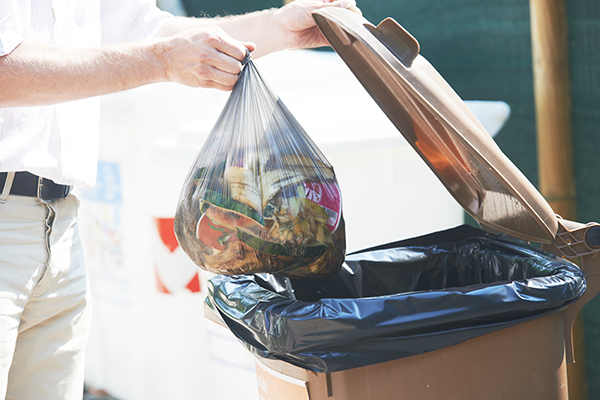Beyond Simple Compliance: Nurturing a Food Safety Culture in Your Team
In writing my last blog post, I was torn on addressing the issue of getting ready for a health inspection. I was torn, not because it isn’t an important topic, but because I didn’t want the reader who just stumbled upon the post and has not followed the FoodHandler blog previously to think I was promoting a reactive food safety program – one where we just get ready for the health inspection a month out from when we think that inspection might occur and forget about food safety the rest of the year. Deep down, I believe that food safety in retail foodservice establishments should be a proactive system, a system where we have developed a food safety culture among our team members.
Establishing a robust food safety culture within your establishment is essential for ensuring the health and well-being of your customers, maintaining regulatory compliance, and safeguarding the reputation of your operation. A food safety culture encompasses the shared values, beliefs, and behaviors that prioritize safe food handling practices at all levels of the organization. When we work with schools, we often talk about how the school system’s superintendent must buy into the food safety program, not just those managers and employees in the kitchen. In the restaurant setting, this means everyone from the general manager to bus persons.
A strong food safety culture begins with a visible commitment from leadership. What visibility means for your operation depends on the operation. Remember, it starts at the top and employees take their cues from the leaders. At the very least, we always say if you are a general manager and you want to promote food safety, but when you enter the kitchen and don’t wash your hands, what message does this send to your employees? When managers actively demonstrate their dedication to food safety, it sets a standard for the entire team. This also includes allocating resources for training, implementing comprehensive food safety policies, and fostering an environment where safety is prioritized above all else.
Investing in regular and thorough training is vital to food safety program success. Training ensures that staff members have the knowledge and skills to uphold food safety standards. Food safety training alone does not change on-the-job behaviors, but if you want employees to work toward changing behaviors, they must know the basics. Training should cover essential topics such as proper handwashing techniques, safe food storage practices, temperature control, and recognizing signs of foodborne illnesses. Understanding that knowledge alone isn’t sufficient; translating that knowledge into safe practices is key.
Food safety should not be viewed as a standalone requirement but as an integral component of your establishment’s core values.
Encouraging transparent and open communication allows employees to voice concerns, report potential hazards, and suggest improvements without fear of retribution. Regular meetings, feedback sessions, and anonymous reporting mechanisms can help in identifying and addressing issues before they escalate. This two-way communication fosters trust and reinforces the importance of collective responsibility in maintaining food safety.
Empowering employees to take ownership of food safety practices instills a sense of responsibility and pride in their work. Recognizing and rewarding safe behaviors can motivate staff and reinforce positive actions. Conversely, holding individuals accountable for lapses ensures that everyone understands the seriousness of food safety and the potential consequences of negligence.
Food safety should not be viewed as a standalone requirement but as a vital component of your business. By aligning food safety efforts with overall company objectives, you create a unified approach where every team member understands their role in maintaining these high standards. This alignment ensures that food safety becomes a natural and consistent part of daily operations.
Incorporating these strategies into the daily operation of your establishment can lead to a sustainable and effective food safety culture. In the end, remember that food safety is not a reactive program. A proactive approach helps mitigate risks and enhance the organization’s overall safety culture. Risk Nothing.
READ MORE POSTS
Getting Your Playbook for Food Safety Organized
As anyone who has ever worked in a foodservice operation knows, from the time food is received in your establishment to the time it is served to your customers, following proper food safety practices is crucial. What many don’t often think about is this time really should extend from the time the manager places their orders with their suppliers (including which purveyors you utilize), through the time the food is consumed – even if that consumption occurs off your premises and days after the original order was picked up by the guest. This is something that has certainly been highlighted by the pandemic as customers across the nation are utilizing take-out, curbside to go, and third-party delivery options more so now than ever before.
Getting Started with Building the Infrastructure
Hopefully in our first January blog, we convinced you of the importance of establishing an infrastructure within your operation to support a safe food culture. So, how does one go about doing this? Well, like any major project, break it into small bites. In our opinion, having a written guide for employees that documents expectations related to food safety basics of employee health and hygiene, temperature controls, and cleaning and sanitizing is the first step. Having this documentation serves as a reference for training and helps fulfill the mission of most foodservice operators which is to serve safe, quality food.
Food Safety Resolutions for the New Year
Finally, 2020 is in our rearview mirror and we can all turn the page to 2021! Resolutions for the new year might be more of the same from prior years (lose weight, exercise more, less screen time, etc.) OR you may have identified new practices to implement in your operation. If the latter, likely goals included some practices related to food safety – especially given the turmoil of 2020 and heightened concern by customers. It is our philosophy that attention to safe food handling practices is a win-win for any operation because of the direct relationship between food safety and food quality, which in turn leads to customer satisfaction. This past year has also demonstrated that attention to safety can affect the bottom line. Thus, the topic of our first SafeBites webinar for 2021 is on the topic of the return on investment of food safety, it is scheduled for January 20, so register now and please plan to attend.
To Toss or Not to Toss? That is the question.
Our first blog for the month emphasized the basic safe food practices needed to keep you and your guests healthy (and happy!), especially during these times of COVID. The impact of foodborne illness can range from an uncomfortable few days to hospitalization or death. Foodborne illness IS preventable and the steps taken to keep food safe also maintain quality of food, and ultimately profitability. Think of attention to food safety as part of quality control and a win-win business strategy. Knowledge about food safety can be helpful when controlling costs as making wise decisions when determining the fate of unserved food can affect the bottom line.










